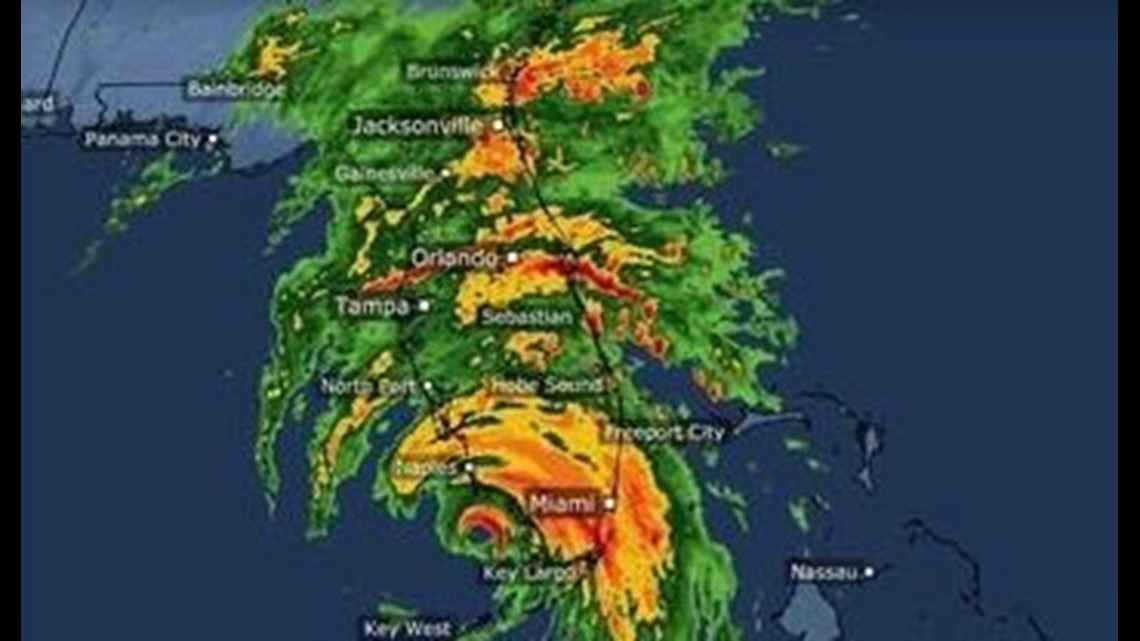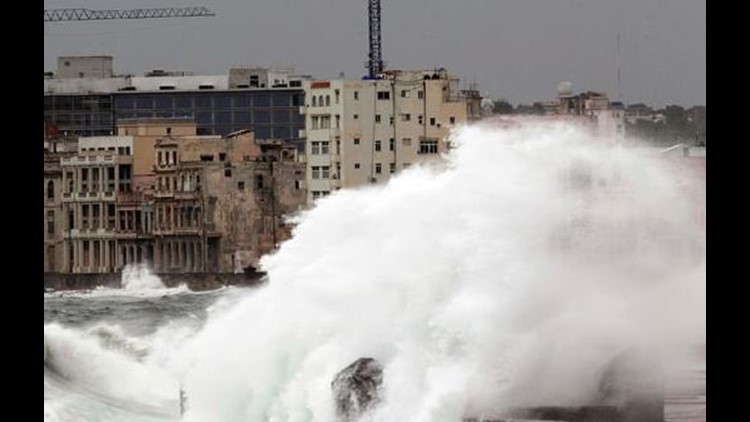NEW YORK (CBSNews) — Hurricane Irma is pummeling parts of Florida with ferocious winds and heavy bands of rain as the eye of the storm climbs north up the coast packing a punch. The U.S. National Hurricane (NHC) latest advisory rates Hurricane Irma as a high-end Category 2 storm with maximum sustained winds around 110 mph.
A Category 3 storm begins with sustained winds of 115 mph and that’s what made landfall on Florida early Sunday (Sept. 10).
Areas on Florida southwest coast can expect a storm surge as high as 15 feet and Fort Myers and Tampa are bracing for Irma’s winds that could reach 100 mph or more. There were wind gusts of 142 mph reported in Naples, according to our CBS affiliate WINK-TV.
In fact, Hurricane Irma could leave nearly 455,000 Tampa Bay homes damaged by storm surges, according to a report by CoreLogic, a global property data firm. They say the destruction could be more than any major U.S. metro area other than Miami and New York — and rebuilding those homes could number around $81 billion.


Hurricane Irma Storm Surge
The NHC’s 5 p.m. advisory has issued a storm surge warning for:
- South Santee River southward to Jupiter Inlet
- North Miami Beach southward around the Florida peninsula to the Ochlockonee River
- Florida Keys
- Tampa Bay
The NHC says a storm surge warning means there is a danger of life-threatening inundation, from rising water moving inland from the coastline, during the next 36 hours in the indicated locations.
This is a life-threatening situation, NHC says. They add that persons located within these areas should take all necessary actions to protect life and property from rising water and the potential for other dangerous conditions. Promptly follow evacuation and other instructions from local officials.
NHC reports that a federal tide gauge in Naples reported a 7 foot rise of water in just 90 minutes.
Hurricane Irma is picking up forward speed and moving inland at 14 mph and its eye is approaching south-southeast of Fort Myers.
Tampa Bay is most vulnerable because the bay acts as a funnel for storm surges, the Associated Press reports. It forces water in narrow channels with nowhere else to go.
Gov. Rick Scott: “We’re going to do everything we can”
Florida Gov. Scott said Sunday that “we’re going to do everything we can to keep every person in our state alive and protected,” as Hurricane Irma began to travel up the Florida coastline.
“I know the winds are going to be very devastating and life threatening. But I’m also very concerned about the storm surge,” Scott said on “Face the Nation.”
Speaking from Tallahassee, Florida, Scott said his hometown of Naples, Florida, is going to see a “10 to 15 foot above ground level of storm surge.”
“People don’t realize it’s going to come into your house, it’s going to fill up maybe your entire first floor, and then it’s going to flow out. So I don’t know how you’re going to survive that. So you just have to think about, you know, you’ve got to get as high ground as you can and, and, and just pray,” Scott said.
He said the storm “is like” Hurricane Andrew, which hit South Florida 25 years ago. But he called Irma “Andrew for a whole state.”
He said he’s called up 7,000 members of the National Guard and that the moment first responders can get out to save people who are stuck, they will. But he highlighted a challenge.
“It didn’t just impact one coast where we could position assets on the other coast. And so it’s going to … take us a little bit longer to do everything we care to do after a storm because we have to bring the assets south. Some of them are even out of state because we couldn’t … pre-position them here,” he said.
The Republican governor said volunteers will be needed to help clean up and distribute food and water after Irma. He also said he’s been receiving regular updates from President Trump, FEMA Administrator Brock Long and Acting Department of Homeland Security Secretary Elaine Duke on how the federal government can best support his state.



